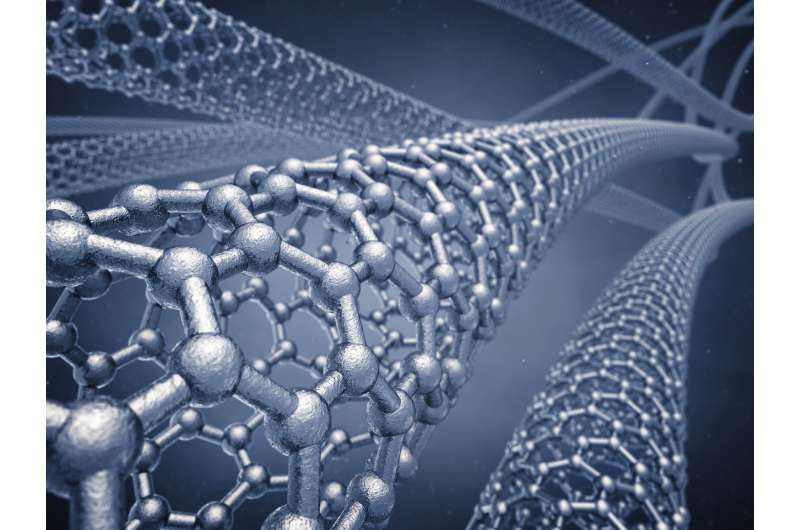The highly conductive nanomaterialhas a wide range ofapplications. When used inan air purifier, it provides agraphene superhighwayfor faster electron transport,enabling more efficient pollutantremoval. Credit: nobeastsofierce | 123rf
A team from The Hong Kong Polytechnic University (PolyU) developed a novel nanostructure embedded into a semiconductor nanofibre that results in superb conductivity. The nanocomposite addresses a key inhibitor to conductivity, with the potential to improve a wide range of applications, from batteries and solar cells, to air purification devices.
While semiconductors are widely used, their effectiveness has been limited by the natural process of photo-generated electrons in recombining with 'holes', or potential electron resting spots. This reduces the moving current of electrons generated by light or external power and, as a consequence, reduces the efficiency of the device. PolyU's Department of Mechanical Engineering designed a composite nanofibre that essentially provides a dedicated superhighway for electron transport once they are generated, eliminating the problem of electron-hole recombination.
The innovation was awarded the Gold Medal with Congratulations of the Jury at the 45th International Exhibition of Inventions of Geneva in 2017.
The team avoided recombination by inserting a highly conductive nanostructure made of carbon nanotubes and graphene into a titanium dioxide (TiO2) composite nanofibre. The electrons and charges can be transported efficiently in the graphene core as soon as they are generated, prior to recombining with the 'holes' in the nanofibre. Led by Wallace Leung, the team has tested the effectiveness of the nanocomposite in solar cells and air purification photocatalysts.
They embedded the nanocomposite into the TiO2 component of dye-sensitized and of perovskite-based solar cells, which are under investigation as alternatives to conventional silicon-based solar cells. The nanocomposite boosted the solar cells' energy conversion rates 40 percent to 66 percent.
TiO2 nanoparticles are the most commonly used photocatalyst material in commercially available air-purifying or disinfection devices. However, TiO2 can only be activated by ultraviolet light, which renders it far less effective indoors. It is also ineffective at converting nitric oxide (NO) into nitrogen dioxide (NO2), at a rate of less than 10 percent.
When PolyU's nanostructure was embedded into a photocatalyst, it provided a graphene superhighway for electrons to transport more quickly to generate super-anions to oxidize absorbed pollutants, bacteria and viruses. The graphene core also significantly increased the surface exposed for light absorption and trapping harmful molecules. It also harvested more light energy across all wavelengths. The semiconductor nanofibre converted about 70 percent of NO to NO2, seven times more than plain TiO2 nanoparticles.
They also tested how well their nanostructure breaks down formaldehyde, a nasty volatile organic compound commonly found in new or renovated buildings and new cars. PolyU's embedded graphene photocatalyst again was able to break down three times more formaldehyde than TiO2 nanoparticles without the added nanostructure.
The new nanocomposite has a wide range of other potential applications, such as hydrogen generation by water splitting, biological-chemical sensors with enhanced speed and sensitivity, and lithium batteries with lower impedance and increased storage.
Provided by Hong Kong Polytechnic University
























